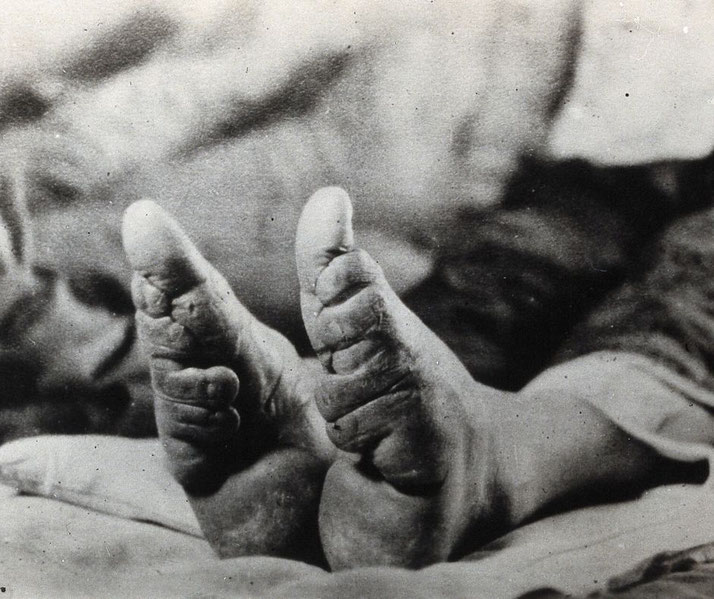A painful beauty: The history of foot binding in ancient China

Foot binding was a common practice in ancient China that became prominent during the Song Dynasty, from the 10th to the 13th centuries.
It involved binding women’s feet and reshaping them so that they became smaller and more delicate, but it was a painful and often crippling process that had a dramatic impact on the lives of Chinese women for more than a thousand years.
Origins
It is not exactly unknown when the Chinese culture began the process of binding women’s feet, but most historians assumed that it likely started during the Tang dynasty (618–907).
There is evidence that during that period, performers sometimes bound their feet to make them look smaller and more delicate.
As a result, the practice probably slowly spread to other social classes.
By the Song dynasty (960–1279), foot binding was common among upper-class women and was seen as an important feature of physical beauty as well as a sign of social rank.
What was 'foot binding'?
This process was incredibly painful and often began when girls were between four and six years old.
It involved tightly wrapping a girl’s feet in cloth strips. Then, they folded the toes under the sole and applied pressure to break the foot’s arch.
To be effective, this is a process that had to be continued and reapplied for many years.
Every day, the bindings would be tightened until it caused a permanent deformity.
To give an idea of how dramatic this procedure was, the Chinese considered the ideal foot to be only around three inches long, which was called the 'golden lotus'.

Who had their feet bound?
Foot binding first appeared among wealthy, upper-class families because they had the luxury of not needing their daughters to be physically capable of doing manual work.
That meant that they could undergo the process without impacting their family.
This is why it was seen as an indication of how wealthy and important a particular family was.
For most women and girls form poorer families, foot binding was incredibly rare.
However, for the elites, the practice often made a girl more marriageable because small feet suggested that she had more grace and elegance than those women who had not undergone the alterations.
It was during the Qing Dynasty (1644–1912) that foot binding spread rapidly appeared across almost all social levels.
By this point, it is estimated that up to fifty percent of women had bound feet, rising to nearly one hundred percent among upper-class Han families.
When those of the lower-class had their feet bound, they were still expected to do all of the housework, despite the discomfort and difficulties it caused.
Why did they do it?
Despite the physical toll, foot binding continued for centuries, primarily because it was valued as a beauty standard.
Women with bound feet were more desirable in marriage, which meant that many families saw it as a way to secure better matches when men preferred wives with small feet.
In a way, the practice also strengthened the idea that women should stay at home. It also showed obedience and submission, traits that were valued in a male-led society.
When did the practice end?
In the early 20th century, foot binding finally began to decline as China modernised and Western ideas of women’s rights reached the country.
Reformers such as Kang Youwei and Liang Qichao led anti-foot binding campaigns in the late 19th and early 20th centuries.
In their view, they argued that the practice weakened China by physically by incapacitating half its population.
The practice was officially banned in 1912 by the Republic of China, but enforcement was inconsistent.
In fact, it continued in some rural areas for several more decades afterwards.
Today, foot binding is seen as a relic of a past era. However, a small number of the last known women with bound feet are still alive and are still impacted by its effects.
What do you need help with?
Download ready-to-use digital learning resources
Copyright © History Skills 2014-2025.
Contact via email
With the exception of links to external sites, some historical sources and extracts from specific publications, all content on this website is copyrighted by History Skills. This content may not be copied, republished or redistributed without written permission from the website creator. Please use the Contact page to obtain relevant permission.





